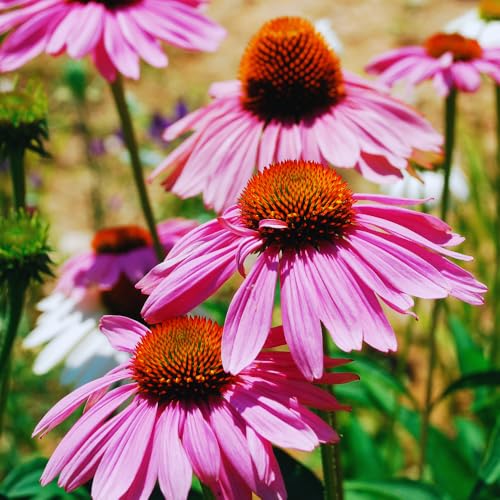Invasive perennials to keep out of your garden – 5 species to avoid and what to grow instead
These problem perennials might display remarkable growth, but they can quickly get out of control
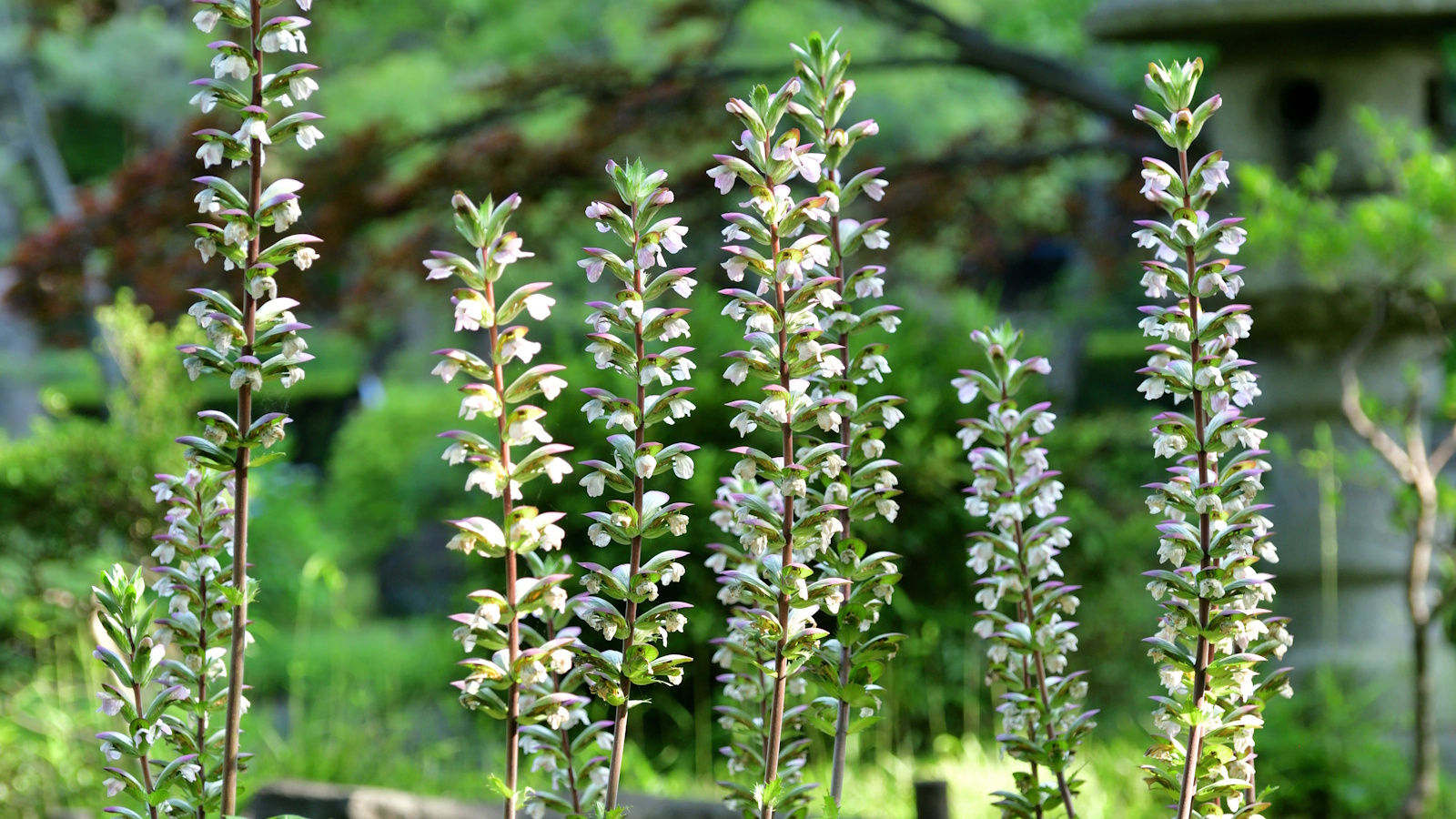

Perennials are a staple of any garden. Whether you enjoy peonies, delphiniums or coneflowers, perennials can fill borders and pots with color year after year. As deciduous plants, perennials tend to emerge and bloom in spring and summer, before dying back over the fall and winter months.
However, some perennials are considered invasive, with aggressive growth habits helping particular species to outcompete native plants. While fast-growing and vigorous perennials might at first seem appealing, they can quickly cause problems in your yard.
So, while you might already know about invasive trees and shrubs to avoid planting, the following list highlights five invasive perennials to be wary of, with recommendations on what native species you could grow instead.
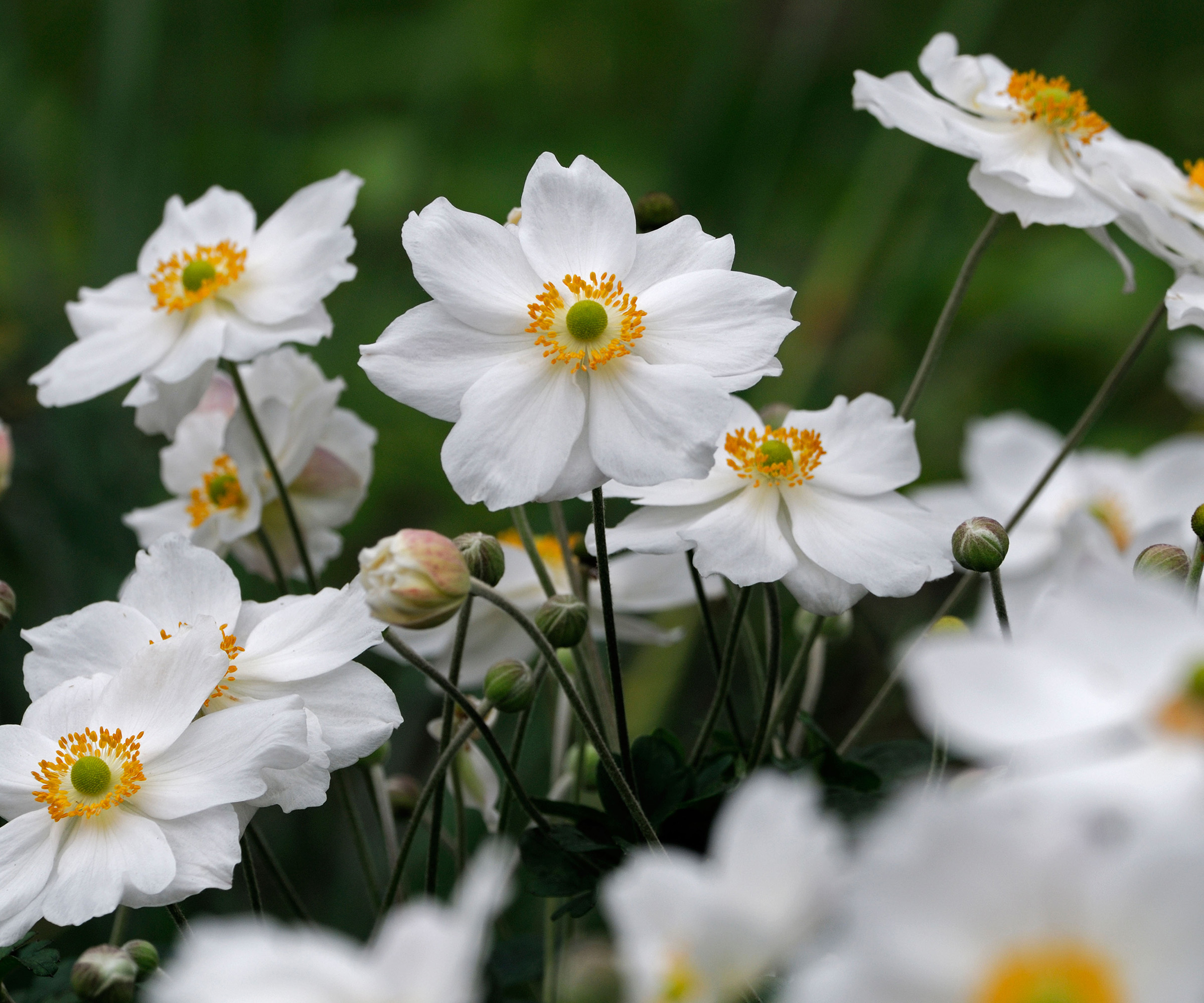
Invasive perennials to avoid
Some perennials, while they might appear beautiful, are considered invasive plants because of their vigorous nature. Whether they spread by self-propagation, creeping rhizomes or rooting stems, these species can quickly dominate garden borders. While you might be able to grow these species in pots, letting them loose in your garden can cause issues. Here, garden experts reveal five invasive perennials to watch out for.
1. Bear’s breeches

Acanthus, or bear’s breeches, is among the useful category of tall perennial flowers. However, while this species does have architectural foliage and structural flower spikes, it can be a nuisance once established, quickly spreading and taking over garden beds.
As a former professional gardener, I have seen how troublesome bear's breeches can be. While it can be useful for filling large shady borders, its spiky foliage can quickly overrun a garden. If you have a larger rural plot, bear's breeches can be a good option for a wild patch or woodland bed towards the back of your yard, but in smaller spaces, this perennial is one to avoid.
Instead, consider planting one of the native heuchera varieties, such as Heuchera americana, available from Amazon. This attractive foliage plant is ideal for shady beds and can be grown from US hardiness zone 4, and importantly, it is far easier to manage than bear's breeches.
2. Ditch lilies
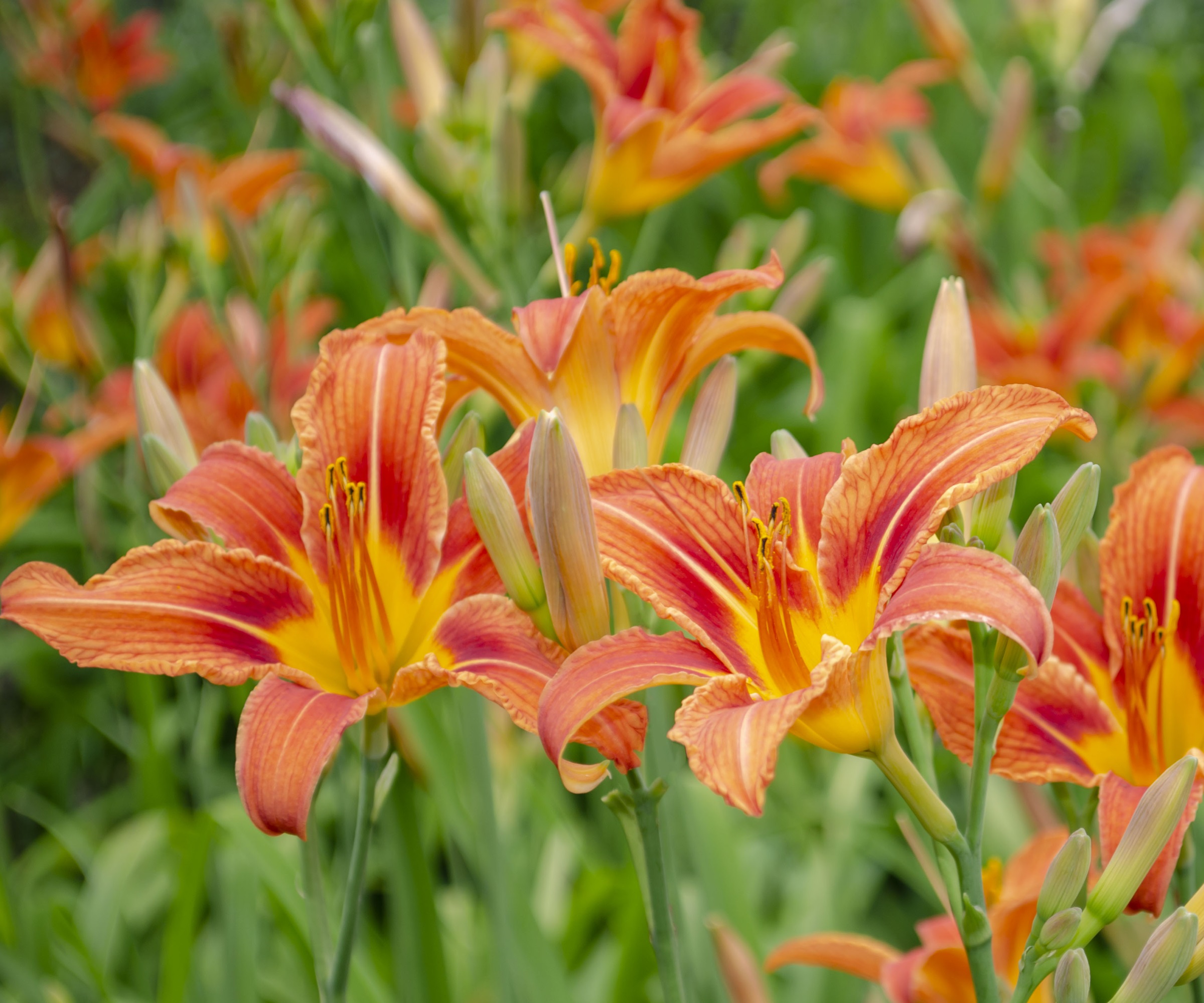
Ditch lilies, or Hemerocallis fulva, are classified as invasive plants in many US states. They are labeled as ditch plants for their remarkable ability to thrive almost anywhere, and while this vigorous growing habit can be useful, it can also create problems for gardeners.
Hemerocallis fulva is native to Asia, having been introduced to North America in the early 19th century. While the flowers are beautiful, this species rapidly spreads via self-propagation, quickly producing seed and developing a dense network of tuberous roots. Anyone who has tried to remove ditch lilies will tell you how impossible the task is, as they can regrow from even a small piece of root left in the soil.
While there are other, less aggressive daylilies to grow, such as the small but mighty Hemerocallis minor, which produces striking yellow lilies in summer, why not instead try one of the many attractive native irises?
There are many widely available options, including the dwarf crested iris, or Iris cristata, which can be grown in partial shade. This native plant can be grown from zone 4 plus, and while this low-growing iris will spread and creep over time, it does not have quite the same aggressive habit as the ditch lily.
Iris cristata rhizomes are available to order from Amazon.
3. Japanese anemones
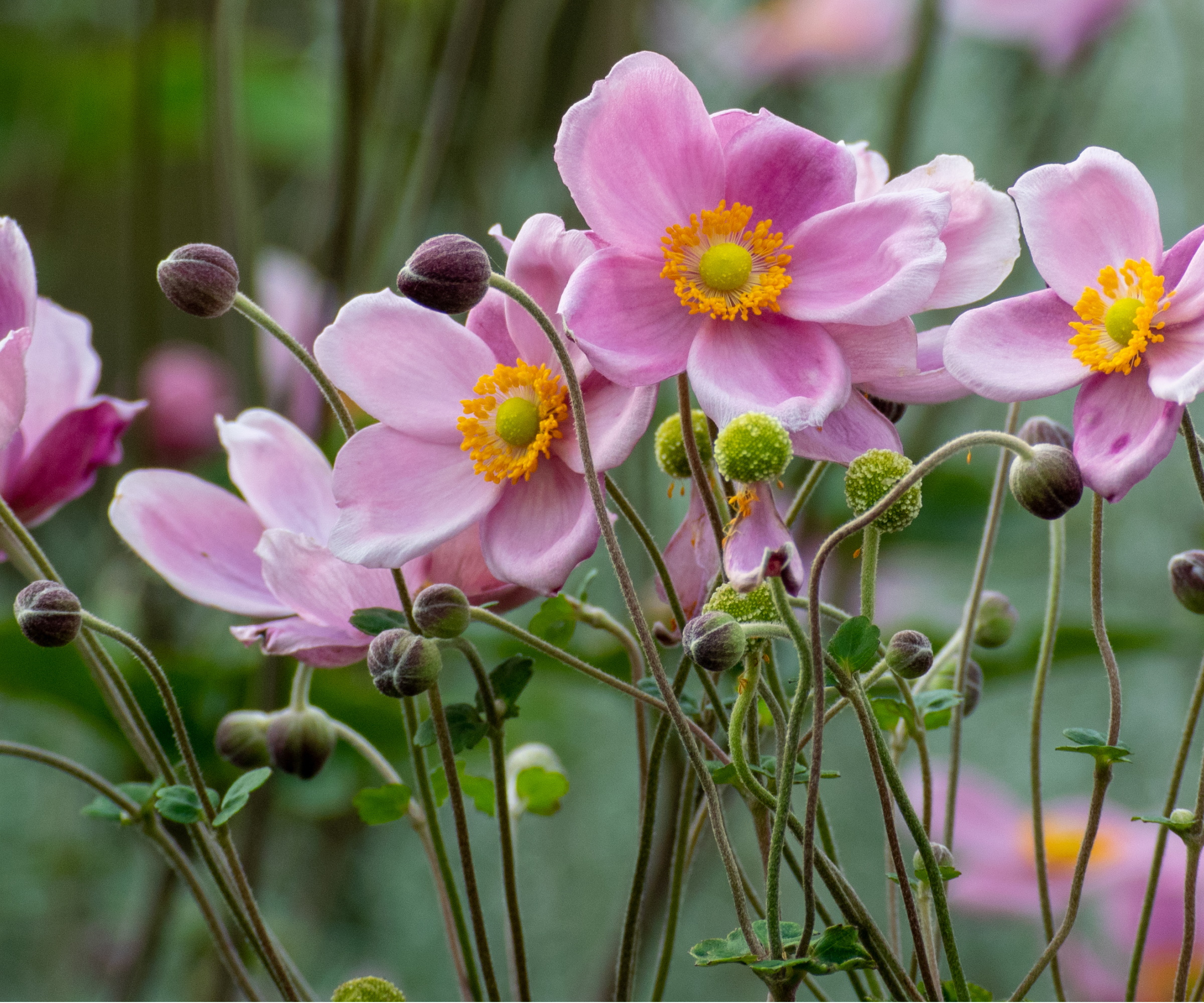
I have grown Japanese anemones in many gardens where I have worked in the UK, and this perennial is well-liked for its late-flowering pink and white blooms. However, once established, Japanese anemone clumps can easily spread by producing aggressive underground runners.
If you are prepared to regularly maintain them by limiting their spread, Japanese anemones can be easily controlled, but if left alone, over time they will outcompete other species in your borders.
Instead, if you are looking for fall-blooming native plants, try growing blue vervain, otherwise known as Verbena hastata. 'In terms of learning how to grow verbena, these perennials thrive in cool regions, able to grow from US hardiness zone 5 plus,' says Ali McEnhill, plant expert and owner of the Old Dairy Nursery in the Hudson Valley.
'This native plant will survive freezing winters and scorching summers with no problem. Position in an open, sunny yard with well-draining soil for the best results.'
Native blue vervain seeds are available from Amazon.

Ali is a self confessed plant geek, gardener, and propagator, owning and operating a plant nursery on an old dairy farm in New York's beautiful Hudson Valley. Ali focuses on growing hardy perennials, trees, and shrubs that thrive outdoors in the cold climate.
4. Purple loosestrife
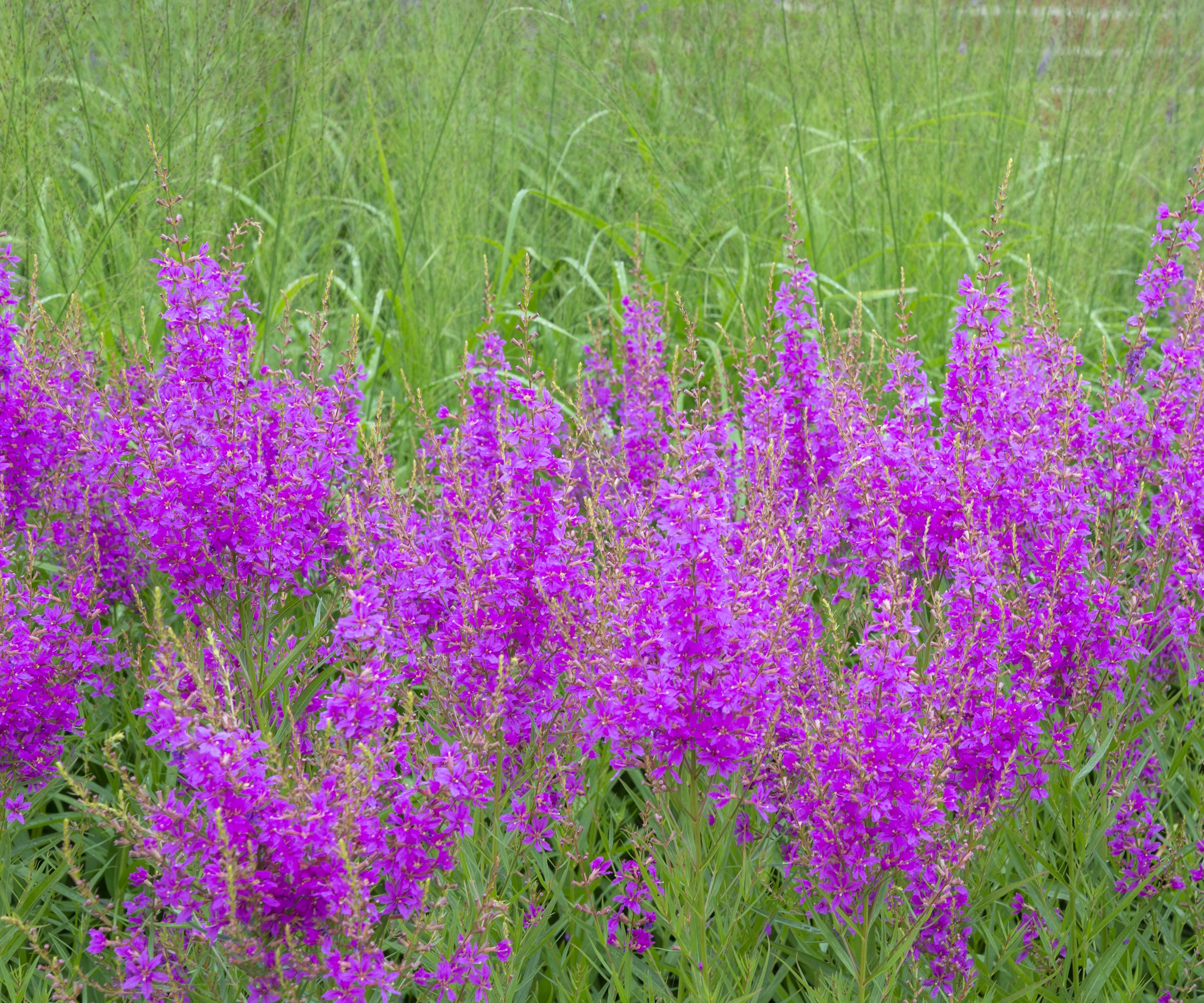
Prairie planting has been a popular trend for several years, and while many species can help to create that wild, natural look, purple loosestrife, or Lythrum salicaria, is sadly one to avoid.
The purple-pink flowers are undeniably beautiful, but today, purple loosestrife is considered invasive across much of North America. In recent decades, the Eurasian perennial has invaded many temperate wetlands across the eastern United States, including New York.
For a similar, prairie-like aesthetic, why not learn how to grow goldenrod? 'Seaside goldenrod, or Solidago sempivirens, produces tall flower spikes full of small, golden-yellow flowers,' says Daniel Barychko, Horticultural Technician at Central Florida Zoo and Botanical Gardens.
'We find this species growing across much of the Florida peninsula, looking particularly impressive in large numbers. This species is tough, ideal for dry yards with sandy or poor soils.'
Live Solidago plants are available to order from Amazon.

Daniel is a Horticultural Technician at Central Florida Zoo and Botanical Gardens in Sanford, Florida. He studied ecology, botany, and zoology and earned a Bachelor of Science in Biology at Florida Atlantic University, Boca Raton, in 2001.
5. Pampas grass
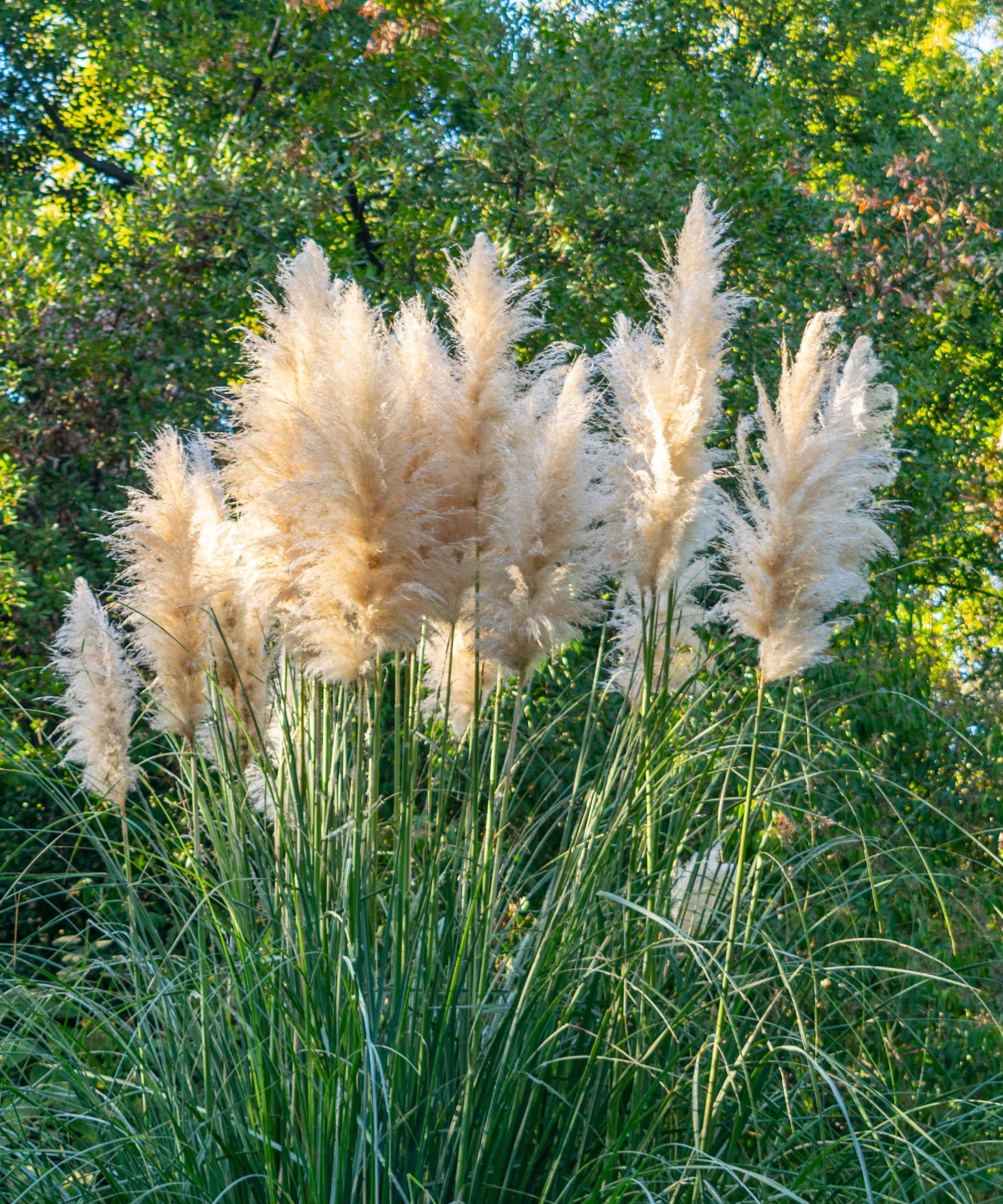
Pampas grass is easily recognizable for its feathery plumes, as you can see in the image here. Introduced to the United States in the 19th century, pampas grass - or Cortaderia selloana - has since become a problem plant in many different regions, notably in California and Washington.
While clumps of pampas grass can quickly grow and spread, this species is also a self-seeding plant and a single specimen can produce millions of seeds that are easily carried by the wind, affecting not only your plot but neighboring yards too.
For a similar effect, try growing one of the many native ornamental grasses, such as Festuca californica, which has attractive silver-blue foliage. An alternative native perennial grass that is suitable for growing in sunny and dry locations is California brome grass, Bromus carinatus, which can reach heights of up to six feet.
Native grass seed mixes are available from Amazon.
FAQs
How do I get rid of pampas grass in my yard?
Cut the grass down to the base in early spring, removing all plant material. Then, using a strong garden spade, attempt to lift and remove as much of the root ball as possible. Avoid using a herbicide to keep chemicals out of your yard. Instead, regularly monitor the soil where the pampas grass grew, lifting any shoots as well as roots over the coming year. While it might take a few years to fully eradicate pampas grass, with continued hard work you can remove this invasive weed from your plot.
With the right care and attention, most perennials can be controlled and their spread limited. However, if you are not able to maintain any of these perennials, they are either best avoided, or restricted to container culture. For example, growing Japanese anemones in pots is a good idea for a small urban plot, and you can be sure that the runners will not spread to your borders.
For more information, see our guide on invasive bulbs to avoid planting in your yard, including advice on handling Spanish hyacinths that can cause problems in garden beds and borders.
Design expertise in your inbox – from inspiring decorating ideas and beautiful celebrity homes to practical gardening advice and shopping round-ups.

Thomas is a Content Editor within the Gardens Team at Homes and Gardens. He has worked as a professional gardener for both public spaces and private estates, specializing in productive gardening, growing food and flowers. Trained in Horticulture at the Garden Museum, he has written on gardening and garden history for various publications, including The English Garden, Gardens Illustrated, Hortus, The London Gardener and Bloom. He has co-authored a Lonely Planet travel book, The Tree Atlas, due out in 2024.


